
 |
|
| Helicopter Weapons Instructor Course (HWIC) 2014 |
| Publiced: August 2015. |
|
HWIC On October 14th the eight Helicopter Weapons Instructor Course (HWIC) was held by the Defence Helicopter Command (DHC) of the Royal Netherlands Air Force. Participating in the two week long exercise were: 298 squadron with its Boeing defence CH-47D/F Chinook, 300 squadron with the Airbus helicopter AS532U2 Cougar and 301 squadron with its Boeing defence AH-64D Apache. The HWIC exercise provides the participating helicopter crews with a number of tasks which includes co-operation with units of other Netherlands armed forces, evasion of ground and airborne radar systems, evasion of small and medium arms fire and evasion of missile treats. The exercise is divided into two phases. The first phase, both theoretical and flying, taking part in the Netherlands with the second phase named HWIC Strike seeing the participants relocate to Northern Germany. In the vicinity of Bergen-Hohne the final exercises are conducted including live firing on the range complex. HWIC Strike is planned to take place end of November.
HWIC crews The HWIC course doesn’t only qualify the flying crews but also the loadmasters and gunners on the transport helicopters. Both the Cougar and Chinook can be armed with machine guns to provide cover to the helicopter or the ground forces. Within all three squadrons at least two but with a maximum of four aircrews need to be HWIC qualified, as addition for AS532U2 and CH-47D/F the same applies for the loadmasters. To be selected for HWIC a number of qualification criteria are set. These included day and night time flying and weapons qualified, completed the EOV course and have accumulated 150 PIC hours which qualifies them for the section lead course. After completed HWIC they return to the squadrons where they will operate as weapon instructors. Within the squadron flights they operate as tactical experts capable of answering the questions of the colleague aircrews. Next to that they will proactively provide briefings and make sure that the assigned flight hours are tactically used. Another assignment will be related to training and evaluations. In order to maintain their own proficiency HWIC certified crews attend Weapon Instructor (WI) meets and conduct the annual week long WI standardization week. During the 2014 exercise eight pilots (four Apache, three Chinook and one Cougar) and three loadmasters (two Chinook and one Cougar) were assigned to the HWIC course.
HWIC missions HWIC 2014 took place from October 14th till October 24th. In order to safely complete the missions scenarios four temporarily reserved air (TRA) spaces were created. During the period the TRA is active non exercise aircraft are not allowed to enter the area while it clears the aircrews to fly low level and conduct landings on locations needed to conduct their mission. Four exercise areas were created using the Maas/Waal rivers, wood and heath land of ‘De Veluwe’ and the military aviation area Deelen (former RNLAF air base). Warrant Officer Peter and First Lieutenant Thijs (CH-47 pilot) provided information about the exercise scenario held at Ede/Ginkelse hide on October 23rd. ‘During the morning and the afternoon missions will be flown providing the same training to the aircrews. Today’s scenario is focused on a 18th strong group of insurgents who set up a training camp in the woods. The group consists of instructors and new joiners who are being trained in the use of small and medium caliber machine guns. The decision was taken to neutralize this group by inserting an infantry force with the use of transport helicopters being escorted by an Apache attack helicopter. Prior to the mission a reconnaissance team infiltrated the insurgent area proving the intelligence which will be used by the pilots and infantry commander. The landing zones (LZ) are established as well as the insertion and extractions times. Based on their mutual briefings the extraction can be pre-set on LZ and time or the commander on the ground can call the transport helicopters for extraction. After completing the entire mission briefing the crews boarded the helicopters and took off to execute the mission’. The morning mission consisted of one Apache, one Cougar and one Chinook. The afternoon was conducted with a second Chinook replacing the Cougar. The Apache had a dual role during this mission where it was assigned as the flight lead. Arriving first in the hostile area it used its on board systems and sensors to validate the intelligence received by the reconnaissance team. To avoid any collateral damage all received information is validated by the aircrews before any attack is launched and the crews can decide to break-off the mission. ‘As soon as the Apache crew identified the insurgent group and established the mission could be executed as planned they called in the formation of transport helicopters and changed its role to close air support. The transport helicopters will land at their LZ and drop off the infantry soldiers. When cleared from the helicopters they will take-off and position themselves in the pre-determined holding area. In the mean time the infantry force transits to the insurgent camp and neutralize the threat. The group will them proceed to the LZ and either call or wait till the transport helicopters are on the ground’. Within the Chinook and Cougar the crews are closely working together. The gunners positioned on each side of the helicopter and for the Chinook also on the rear ramp watch for threats. When on the ground the loadmaster is responsible for the quick entry of the forces with the gunners monitoring their area and provide cover fire when needed. As soon as boarding is completed the loadmaster gives the take-off command to the pilots which will then depart the fighting area. They will be followed by the Apache crew who monitors the area with its sensors for threats during the extraction and provide cover when needed. HWIC offers the participating air crews the opportunity to train together as well as with other forces which would also take place in real world scenarios. Currently the Defence Helicopter Command has deployed 298 squadron with three Chinook and 301 squadron with four Apache helicopters to Mali in support of Dutch and allied forces. Without doubt the valuable lessons learned during the HWIC exercises will be put to practice during the duration of the deployment to Mali. The author would like to thank the Defence Helicopter Command, Kiki, FLt. Thijs and WO Peter for their assistance during the visit to the HWIC exercise. |
| Photogallery |
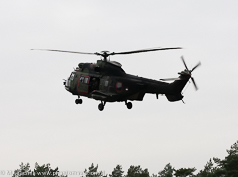 |
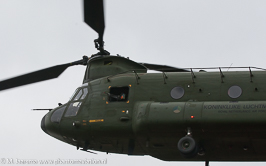 |
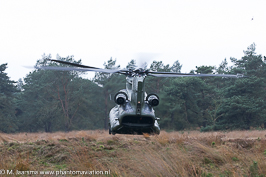 |
| AS532U2 Cougar | CH-47D Chinook | CH-47D on the ground in the morning. |
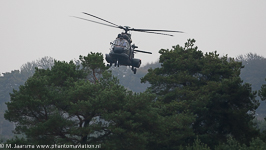 |
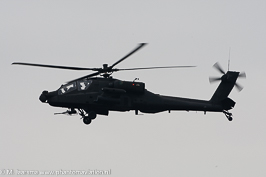 |
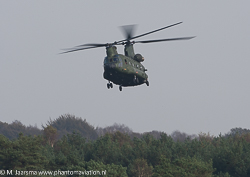 |
| A Cougar comes in to land. | with the Apache providing cover. | Chinook inbound to its landing spot. |
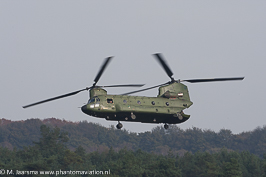 |
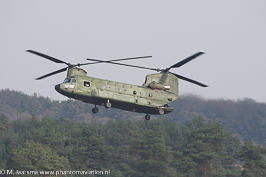 |
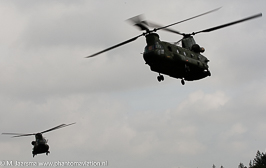 |
| Chinooks flying low over the Edense | heide training area. | |
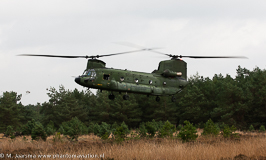 |
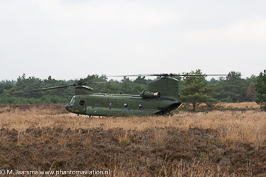 |
|
| Another landing spot for the Chinook | during the afternoon mission. |
|
|